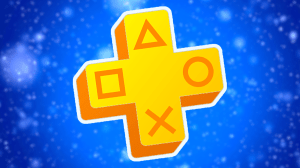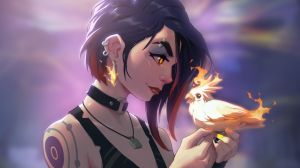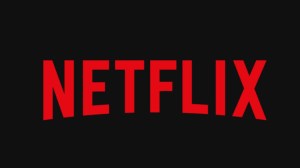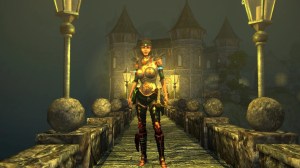In a three-part mini-arc, writer Scott Snyder and James Tynion set the stage for the next “act” of the sprawling, three-year epic they have been working on in the Justice League titles with collaborator Joshua Williamson and a lineup of A-list artists like Francis Manapul and Jim Cheung.
Videos by ComicBook.com
The story, which took place between Justice League #16 and 17 and the Justice League Annual that was out in between them, made huge changes to the Fourth World and Justice League status quo, setting up a huge change that will reverberate through some upcoming issues before paying off as a “summer blockbuster,” according to Snyder.
Snyder and Tynion recently joined ComicBook.com to talk about the current story, what’s next, and how this all connects to the events of Metal.

At this point, is it just a given that you two are going to work together on the biggest of the big stuff?
Scott Snyder: Well, I mean, he’s my best friend, and he’s also probably the best writer I know. So for me, James is somebody who I trust inherently to, A, make sure that my stuff is as strong as can be, and B, to write stuff that rivals or can surpass mine. So, he’s an incredible secret weapon to have on stuff like this. And when you’re doing something that’s as big as we are on Justice League that’s huge.
When I pitched it to DC with him when we started, it was really like an extension of all the stuff we were doing on Metal. It was gonna be something that was ambitious beyond Metal. Metal was sort off the opening shot. We’re gonna use all those pieces to create something like No Justice that will allow us to do these different books. And the point of doing these different books is to cumulatively build an even bigger story that’s going to explore every aspect of the DCU, and then eventually culminate in something really, really, really big and special.
So for us, it’s one giant metastory. The two things are, first and foremost, it’s one big design. I hope they have confidence in us at this point, that these three issues in particular not only kind of gives huge answers and revelations but also show the bigger design that ran through Metal to No Justice to now, and then give them confidence in the plan we have going all the way through 2020.
But secondly, I hope that they see how much the story means to us, that these issues are deeply emotional. These characters are experiencing these events in the DCU in ways that I hope are resonant for the kinds of things that I think we’re all thinking about right now, and the uncertainty we’re all facing. I knew that when I pitched Justice League, I wanted it to be my opus, and I wanted it to be something that if I never wrote another superhero book after being at DC for 10 years would stand as a really good testament to that. And there’s nobody I would do that with except James. So the tapestry that we’re building, I’m grateful to him for being such a key part of.
How do you differentiate writing a story like this, which is huge unto itself, versus other stories that are a smaller piece of the huge story?
James Tynion IV: Yeah, I’m happy to. Originally, we did have this as No Justice 2, essentially. But we realized as we were getting closer to it, that this was more of a single punch. We didn’t need four or five issues to tell this story.
We needed a single big powerful moment, because the rise of Perpetua and what happens to the Source Wall in this issue, it is the end of the first act of everything we’ve been building and the start launch of the terrifying second act. It’s the huge turn, and we wanted an issue that would really be able to deliver that. And because we had the Justice League Annual #1 in our back pocket to use when we needed, that felt like, “this is the moment.” This is the moment to sort of launch that, and it was perfect because January’s a five week month. And we just knew this is the moment to put that annual into the world and really shake things up for the entire year.
There are huge ramifications for the Fourth World characters in this book, how’s that going to shake out in the monthlies given that obviously Darkseid has been playing a very, very different role than usual?
Snyder: Well, what we’d want to impress upon fans is that all of it’s done in coordination with the people on other books. So, a lot of the stuff about Hawkgirl, Hawkman — that was done in coordination with Rob Venditti.
All the stuff in Justice League Odyssey was done in coordination with Josh Williamson, who’s really like our other partner. He was completely integral to Metal, and obviously he co-wrote No Justice with us. So, I mean, for us, like, everything that Josh is doing with Darkseid is part of the same story that we’re doing here.
There’s no kind of, “Oh, is Darkseid gonna behave in a way that’s confluent in both books?” Josh’s plan was set up with our plan when we all pitched No Justice and “New Justice” together.
Tynion: Yes, and we see Darkseid standing at the end of this issue, and that implies that he has some awareness of the larger machinations of the universe right now, and he is prepared for them and his plan in the Ghost Sector. What he has been doing over in Odyssey is a part of this larger narrative.
So, for what’s up with the New Gods characters, and how they relate to all of that? I really strongly recommend everyone should go pick up Justice League Odyssey, because it’s going to be very important to [our big story]. Darkseid’s one of the largest characters in the entire DC canon. He is a core part of the larger story we’re building, so go check out that book.
James, did your run on Detective Comics help set a standard for exploring all these lesser-seen characters?
Tynion: Oh, absolutely. I love weird, obscure DC characters and the entire B-list canon of the DC Universe. Those are the ones I have action figures of hanging out on my desk. So any opportunity I have to draw them into a story, I’m gonna leap at the chance to.
The Annual is actually my first chance to write Kyle Rayner, and he’s the Green Lantern I grew up with. So that was an honestly really cool moment, because those Kyle Rayner Green Lantern comics were some of the first DC Comics I ever read.
Honestly, that’s part of the fun here, is being able to tap into that core joy. The core mission statement of the book has always been that the core Justice League title is the entire DC Universe in a single title. We don’t want it to feel like these things don’t affect the larger world, and that has been important to us from the get-go.
We even see that in the Legion of Doom issues, like The Joker issue, where we saw the other villains of the DC universe being interviewed for the potential to join the Legion of Doom.
We want to show that all of the pieces are connected, and they are connected through the Hall of Justice, and the Hall of Doom. And so, that’s why when they’re going out on this mission, Martian Manhunter needs psychic support to help guide the Omega Titans, so we bring in his niece, M’gann M’orzz, Miss Martian.
They’re dealing with the entire Green Lantern Corps, so the other core Green Lantern member that’s on a major DC team comes along on the journey as well. It’s like when we saw Firestorm back in “The Drowned Earth” issues. We always want to show the broader picture and play with the incredible toy box of DC characters that we have at our disposal.
As we see some cosmic characters we haven’t seen in a while pop up…this story has started to feel like it has Crisis-level implications.
Snyder: Yeah, very much. Again, what I try to convey to readers who’ve been following the series is that it’s one giant plan that runs from Metal all the way through 2020. We always want it to feel modular, that you can pick up any of these books and feel rewarded and gratified from a singular reading experience. But if you read all of them together, the hope is that you get a sense of this giant, immersive tapestry of story that includes everything that we not only introduced, but things that we reference from other runs past, and brings it all back into something very, very big, summer into fall. So, very soon.
In spring, I think you’ll start to get a sense of what we’re building towards and some of the big giant explosive events that are even leading up to the bigger stuff that happens towards the end of 2019. I just remember as a kid, and as an adult too, loving when things had a very clear long-term design. From Secret Invasion, all that kind of stuff that used to be done, I think, more thoroughly.
And we’re trying to really do that here and make it clear to people that love it or hate it — hopefully you love it — we have a plan that’s been in place for well over a year and a half, and that it’s gonna run for a while. We want you to feel rewarded, whether you read one book, or you read a bunch of them.
I think that since Rebirth, there has been an emphasis on restoring the history of the DC Universe, referencing old events, things like that. Do you guys have a concrete “What happened” and “What didn’t” in your heads?
Snyder: You walk in and go, “I want to make sure that we acknowledge that this happened,” but don’t necessarily say, “Oh, no, but look, Millennium‘s gonna be super important here,” if that makes sense. It feels kind of like you’ve winked and nodded at a lot of those things, and it’s like, when you’re making those Easter eggs, you have to balance knowing, “Yeah, half of the things we reference are gonna be hugely impactful on what’s coming up, and the others were just like letting you know that they’re there.”
Tynion: I think that this was a big thing that Scott did incredibly well during Metal, which referenced a whole bunch of crazy aspects of the DC Universe that hadn’t really been used in the modern era. And that was our goal here. You always want to tap into the big stories that were such big, emotional pieces of why people love the DC Universe, but you don’t want to make any present-day story hinge on something that came out 30 years ago.
Those little references ideally, should show that this is a big tapestry, the DC Universe. All of these pieces are connected. Everything builds on itself.
As a reader who just started picking up comics in the last couple of years, they see these little ties towards something like Crisis on Infinite Earths, and they go read that story. And they see how that story informs the present story, but that story isn’t necessary to understand this story. It’s designed to be all additive, without being restrictive.
What are we going to see for Justice League going forward that’s gonna come out of the kind of massive events of this month?
Snyder: Well, I can say, these three issues in particular — 16, the Annual and 17 — each offer really big revelations, and together collectively signal the beginning of our second act and ramp the series up towards, I think, what genuinely will be like its biggest moments, but also biggest arcs and most emotional, I think, most emotional turns for the year, for 2019. So I’d say pay close attention to these three.
And then what’s coming next, honestly, we have a great Legion of Doom issue from James for #18, which gives even more revelations. And then we go with our heroes into something called the Sixth Dimension, which is essentially the green room, or the control room, of the entire multiverse, where we meet characters from Metal that will be a big surprise to people.
And then after that, we build to our biggest stuff ever over the summer, because it’s summer, and you gotta go blockbuster, right?








